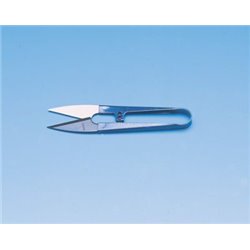HOe is a scale used by modellers in mainland Europe to construct layouts portraying a narrow-gauge railway with a...
No products
Product successfully added to your shopping cart
There are 0 items in your cart. There is 1 item in your cart.
Search Tips
What is the best way to cut photo etch parts from a fret?
Photo Etch, or PE parts are metal parts that are generally made from brass. Many model kits are supplied with PE parts that are supplied on their own specific sprues, which are usually referred to as frets. The great advantage of PE parts is they are actually very strong and as such can be produced in much finer dimensions than the regular plastic ‘styrene’ parts that usually make up most model kits. Many manufacturers supply PE frets as they offer the opportunity for significant details improvements and scale realism for many models.
As with normal styrene components, PE parts will have to be cut from their frets before assembly. The best way to achieve this is either with a pair of snips or with a sharp hobby knife. A number of manufacturers have created snips that are specifically configured for working with PE parts and these can be a good investment for modellers who are regularly working with PE parts. PE frets tend to be very densely packed with components and as such it may not always be possible to use snips to remove a part. As a result, it is generally a good idea to have a sharp hobby knife as a backup with a good supply of replacement blades, as regular cutting of PE parts can quickly lead to a dull blade.
When using a hobby knife a flat solid surface is essential for safe removal of PE components. A self-healing mat can be useful for this task, although many modellers will prefer a more solid surface such as wood which is less likely to distort the part during cutting. When using a hobby knife, it is also a good idea to wear some form of eye protection. This is because PE parts are generally held on their frets with high tension and as such can catapult in random directions during the cutting process.
When successfully removed from their frets, PE parts may have unwanted burrs that will need to be removed prior to fitting on the model. This can be achieved either by careful use of a hobby knife or by a smooth grain sanding stick. Care should be taken during this process, as a part that is roughly handled can easily be bent or distorted.
Due to their small size, most PE parts will need to be held by tweezers when fitted to a model. However, some spring-loaded tweezers can have too much tension which can easily result in the part being catapulted in a random direction, often never to be found again! Gentle Grips are a good way to avoid this problem. They are tweezers that have rubber sheaths applied to their tips, ensuring that they gently hold the PE part without applying excess force that could end up in an involuntary catapulting action. The gentle pressure exerted ensures minimal distortion to the PE part in question.
Click here to receive the tips weekly in your mailbox. You can unsubscribe at any time.










